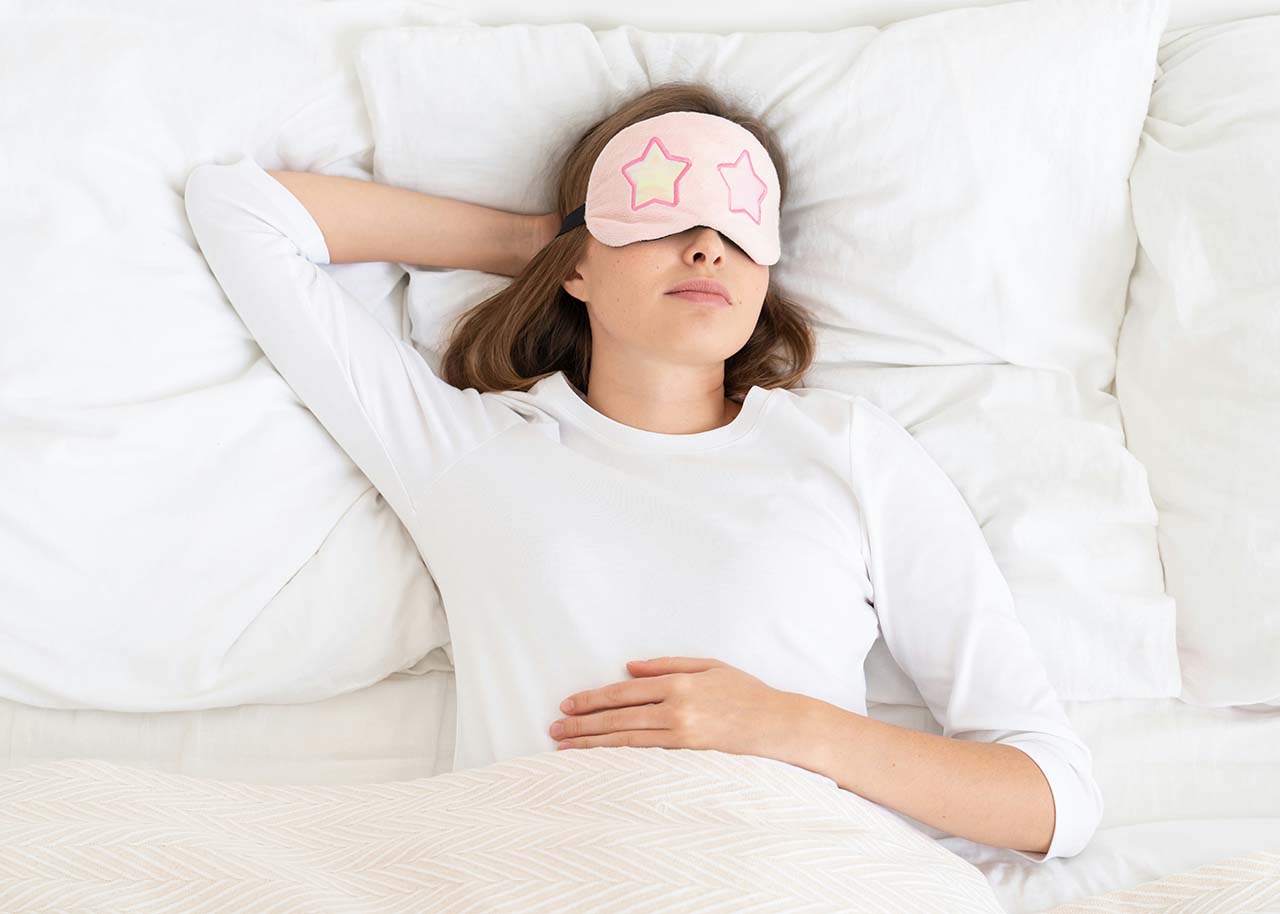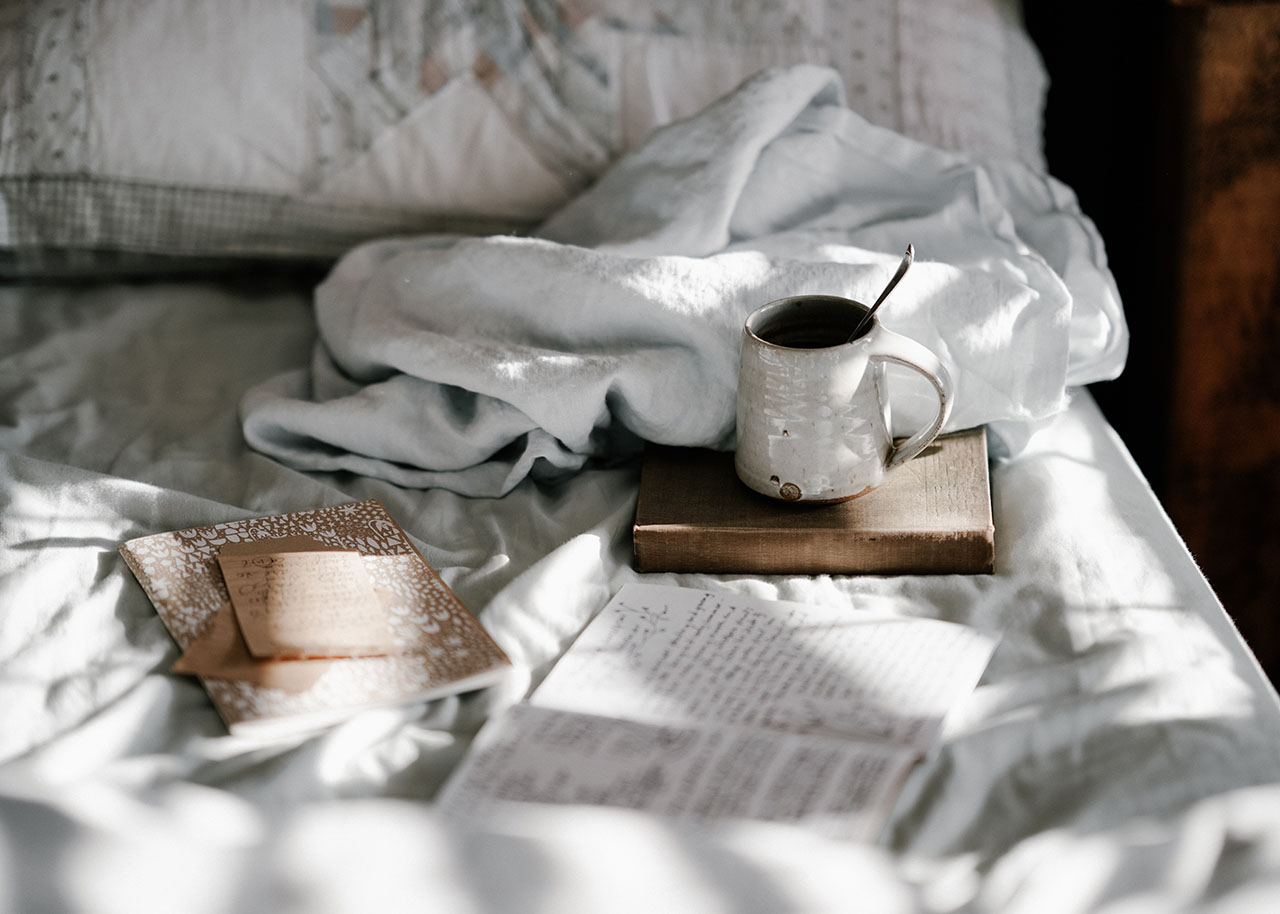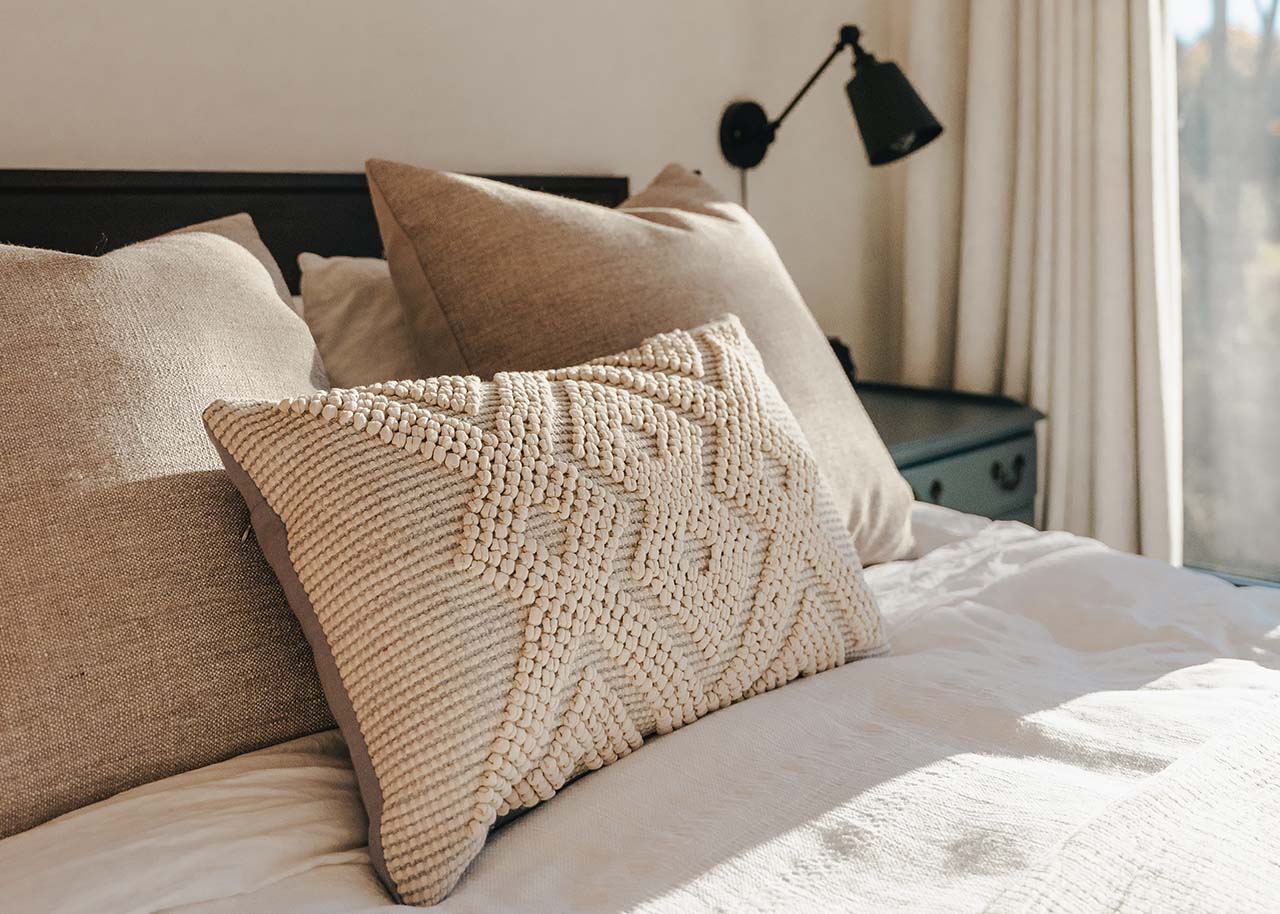(collective post)
Here’s something that might surprise you: we’re sleeping 90 minutes less than people did 100 years ago. That sleep deficit isn’t just leaving you tired—it’s actually affecting your health. A Harvard University School of Medicine study found that poor quality sleep can lead to a 15% decrease in life expectancy.
Your bedroom should be your own personal sanctuary. A space where you can escape from the outside world and truly rest. Yet with modern distractions and busy lifestyles, creating an environment that promotes proper sleep has never been more important. Studies show people simply sleep better when every aspect of their bedroom has been carefully optimised—from light and colour to temperature and comfort.
So designing your bedroom as a sleep sanctuary is essential for your wellbeing. Whether it’s selecting the right mattress or managing room temperature (experts suggest 18 degrees Celsius is ideal), every single element plays a crucial role in how well you sleep.
Why should you create a sleep sanctuary? Because everyone wants and deserves a good night’s sleep. And because we spend a third of our lives in bed, shouldn’t that space work perfectly for you?
Ready to discover the bedroom design secrets that will help you sleep better tonight?
Designing the Right Atmosphere
What’s the secret to a bedroom that instantly makes you feel calm? It’s all about creating the right atmosphere. The environment around you plays a huge role in how well you can relax, unwind, and drift off to sleep.
Choose calming colours for walls and decor
The colours surrounding you each night can make or break your sleep quality. Soft, muted tones work best for encouraging rest and creating that peaceful sanctuary feeling.
For your bedroom walls, these sleep-friendly options work beautifully:
- Blues and greens: Connect you with nature and instantly calm your mind
- Soft neutrals: Beiges, warm whites, and light greys create the perfect serene backdrop
- Gentle pinks: Colours like Dulux Heritage Powder or Potters Pink can be surprisingly restful
Blue has a naturally calming effect that helps you relax and clear your mind after a stressful day. It can even help lower your blood pressure and steady your breathing—exactly what you need for better sleep.
Takeaway Tip: Try the 60-30-10 rule when choosing your colour scheme. Use 60% dominant colour, 30% secondary colour, and 10% accent colour for a balanced look.
Use natural materials for a grounded feel
Want to bring instant calm into your sleep sanctuary? Natural materials are your best friend. Wood, stone, and organic fibres add warmth and create that important connection with the outdoors.
Wooden bed frames or bedside tables give you that timeless, rustic element, whilst rattan or wicker accents contribute to an earthy atmosphere. These materials create visual interest without making your space feel busy or overwhelming.
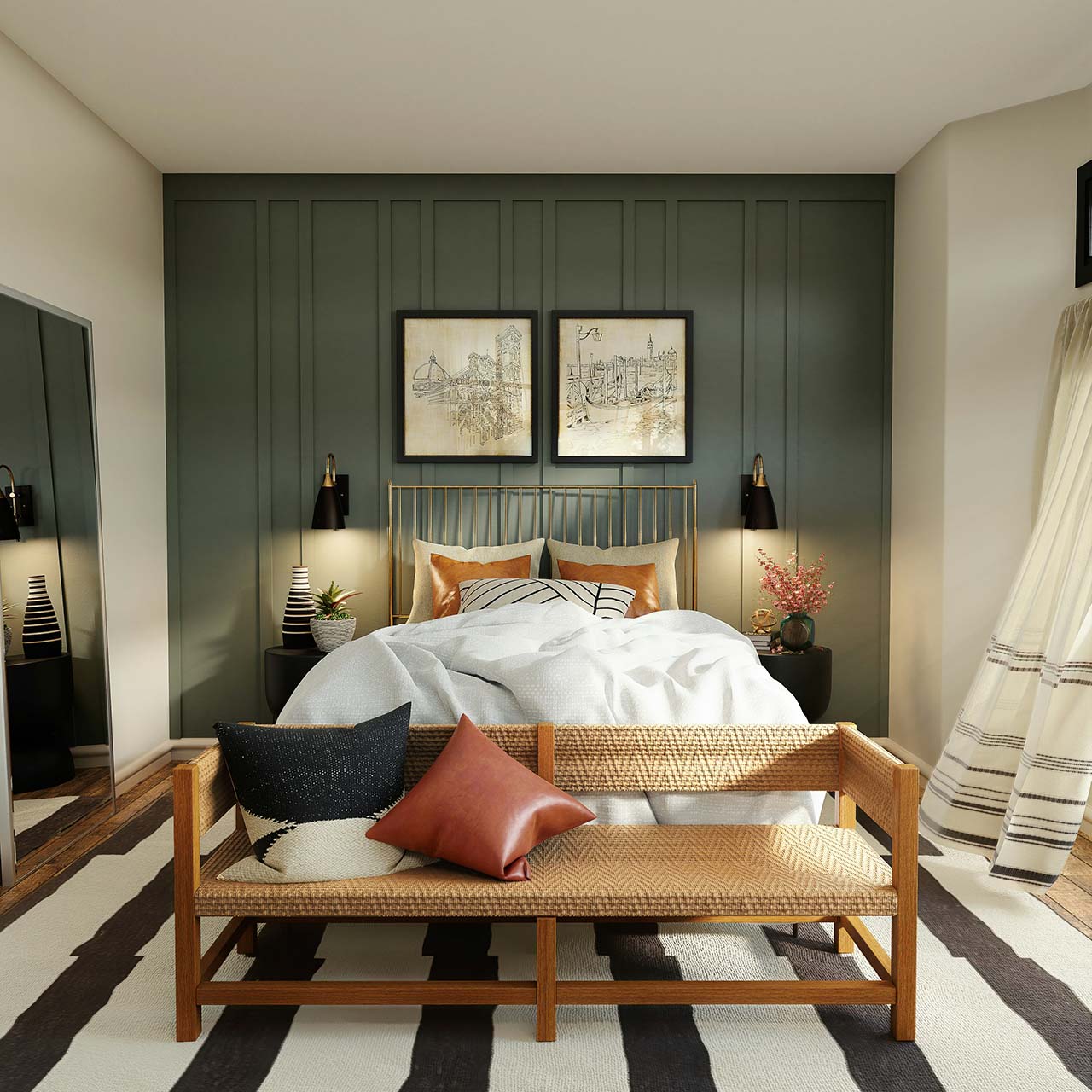
Add soft textures like rugs and throws
Here’s where you can really make your bedroom feel cosy and inviting. Layering different textures creates depth and comfort that soothes your senses.
Place a high-pile rug beside your bed so your feet sink into something luxurious when you get up each morning. Layer in plush throws, velvet cushions, and quality linen bedding to create that tactile experience your body craves.
The beauty of textiles? You can easily swap them around to create different seasonal looks without redecorating your entire room. Perfect for keeping your sleep sanctuary feeling fresh and inspiring.
Lighting and scent for better sleep
Your sleep sanctuary needs more than just the perfect mattress and calming colours. Light and scent play fundamental roles in preparing your body and mind for restful sleep. Make thoughtful choices in these areas and you can dramatically improve your sleep quality.
Use warm, dimmable lighting
Light directly affects your body’s natural sleep cycle. Cool, white, blue, or green lights signal to your brain that it’s daytime, making it harder to wind down and potentially interfering with melatonin production. Instead, opt for warm lighting with red, orange, or yellow tones, which are gentler on your eyes and won’t disrupt your sleep hormones.
Research suggests there’s evidence that red light may actually help stimulate sleep, whilst blue light from electronic screens can negatively impact your sleep quality. This effect extends to children too, which is why experts often recommend warmer colours for night lights.
Dimmable lighting gives you exceptional control over your bedroom environment. Rather than suddenly switching from bright light to darkness, gradually dimming lights as bedtime approaches helps signal to your body that sleep is imminent. This gradual transition mimics the natural sunset and prepares your brain for rest.
Layer lighting with lamps and ceiling lights
One bright overhead light can feel harsh and keep your brain alert. Instead, create a layered lighting scheme with multiple sources:
- Ambient lighting: Your general illumination, providing enough light to move around safely
- Task lighting: Focused light for reading or other activities
- Accent lighting: Decorative elements that highlight features or create atmosphere
This approach allows you to transform your bedroom from an energetic morning space to a calming evening retreat. Wall lights and sconces cast a soft glow, whilst bedside lamps provide perfect illumination for night-time reading. For ultimate flexibility, place decorative lamps on dressers or in alcoves for warm, low-level lighting.
Incorporate soothing scents like lavender or chamomile
Don’t underestimate the power of scent—certain fragrances can help you fall asleep faster and improve sleep quality. Among essential oils, lavender has been studied extensively and associated with improved sleep even for those with insomnia. It has calming effects on heart rate, blood pressure, and mood, plus it increases deep sleep, leaving you feeling more refreshed in the morning.
Roman chamomile is equally effective. Studies show it can improve total sleep time for older adults and reduce anxiety levels. Its gentle, soothing properties make it suitable even for children over two who need help settling.
Other beneficial scents include frankincense, clary sage, and ylang-ylang. A diffuser placed near your bed with just 2-3 drops of essential oil can help create a sleep-inducing atmosphere.
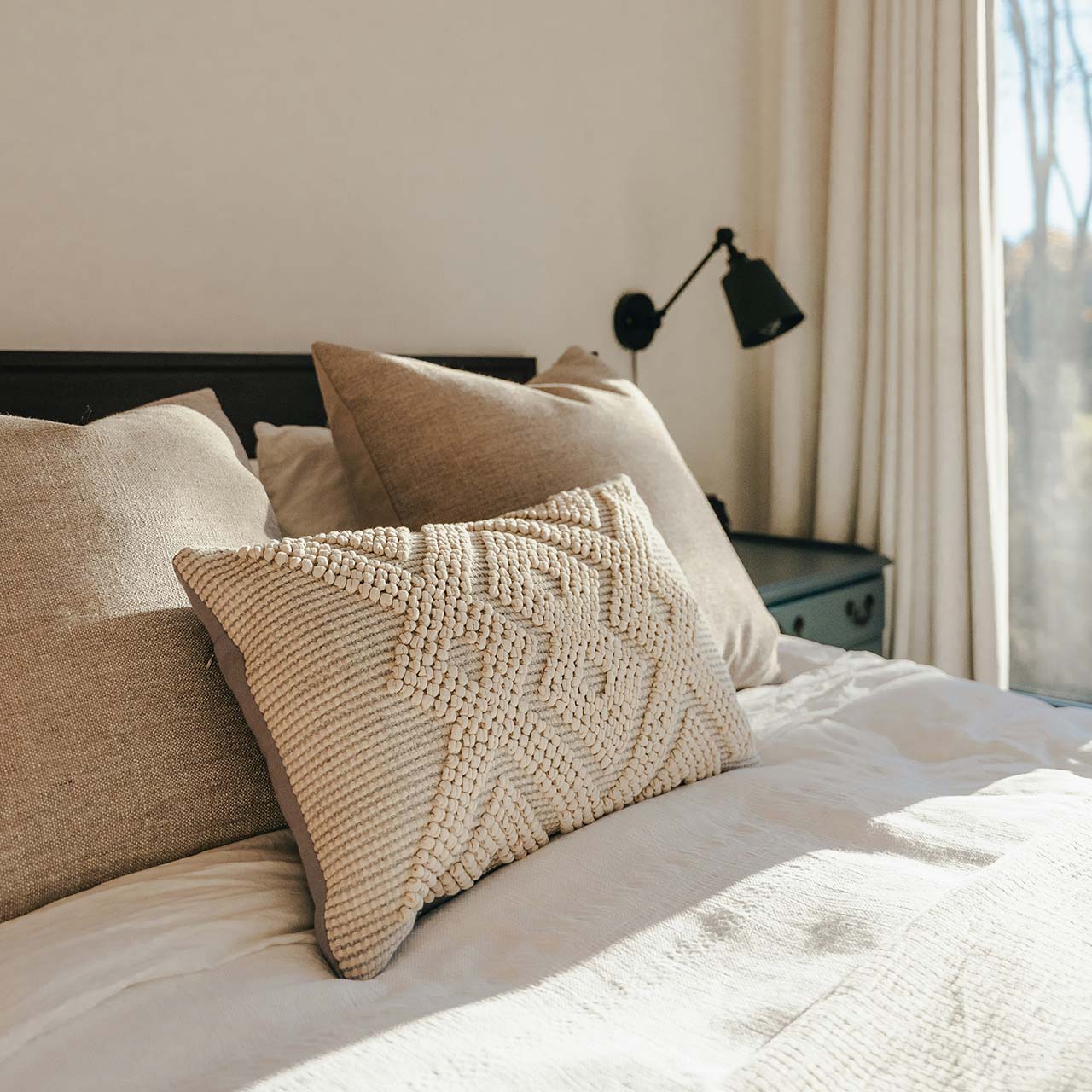
What about your actual bed and bedding?
Your bed is the star of your sleep sanctuary, isn’t it? Getting the comfort and support right here can make all the difference to how well you sleep each night.
How do you choose the perfect mattress?
Here’s the thing about mattresses—you should replace them roughly every eight years. The right mattress supports your posture and spinal alignment, which means better, undisturbed sleep. But which type suits you best?
Consider these options:
- Memory foam: Moulds perfectly to your body shape, ideal if you’re a side sleeper or dealing with back pain
- Pocket spring: Individual springs move independently, perfect for couples and back sleepers
- Hybrid: Combines springs with foam layers, giving you balanced support and comfort
Don’t forget about firmness—medium-firm mattresses generally work best for back pain sufferers, whilst lighter individuals often prefer softer surfaces.
Which sheets will help you sleep better?
Your sheets play a bigger role than you might think when it comes to temperature regulation and comfort. Hot sleepers should look for breathable fabrics with thread counts between 200-450. Here are some excellent options:
- Egyptian cotton for that luxurious, breathable feel
- Bamboo-derived sheets for moisture-wicking and hypoallergenic benefits
- Linen for exceptional temperature regulation
Are you using the right pillow for how you sleep?
Your pillow should support proper neck alignment based on your sleep position:
- Side sleepers need firmer, thicker pillows to bridge that shoulder-ear gap
- Back sleepers benefit from medium-height pillows that support the natural neck curve
- Front sleepers require thin, soft pillows to prevent neck strain
Remember to replace your pillows every 18-24 months to maintain proper support and hygiene. Your neck will thank you for it.
Clear the clutter for better sleep
Visual clutter in your bedroom doesn’t just look messy—it actually disrupts how well you sleep. Research shows that disorganised spaces create stress, making it much harder to relax when bedtime arrives.
Keep surfaces clear and organised
Those piles of clothes and scattered belongings aren’t just untidy—they’re creating anxious feelings that interfere with falling asleep. Spend just a few minutes each day clearing your surfaces, and you’ll notice the difference immediately.
For your bedside table and dresser, choose small containers with lids that look beautiful whilst keeping everything organised. Sort loose items into pretty boxes, and you’ll create both organisation and visual appeal in one simple step.
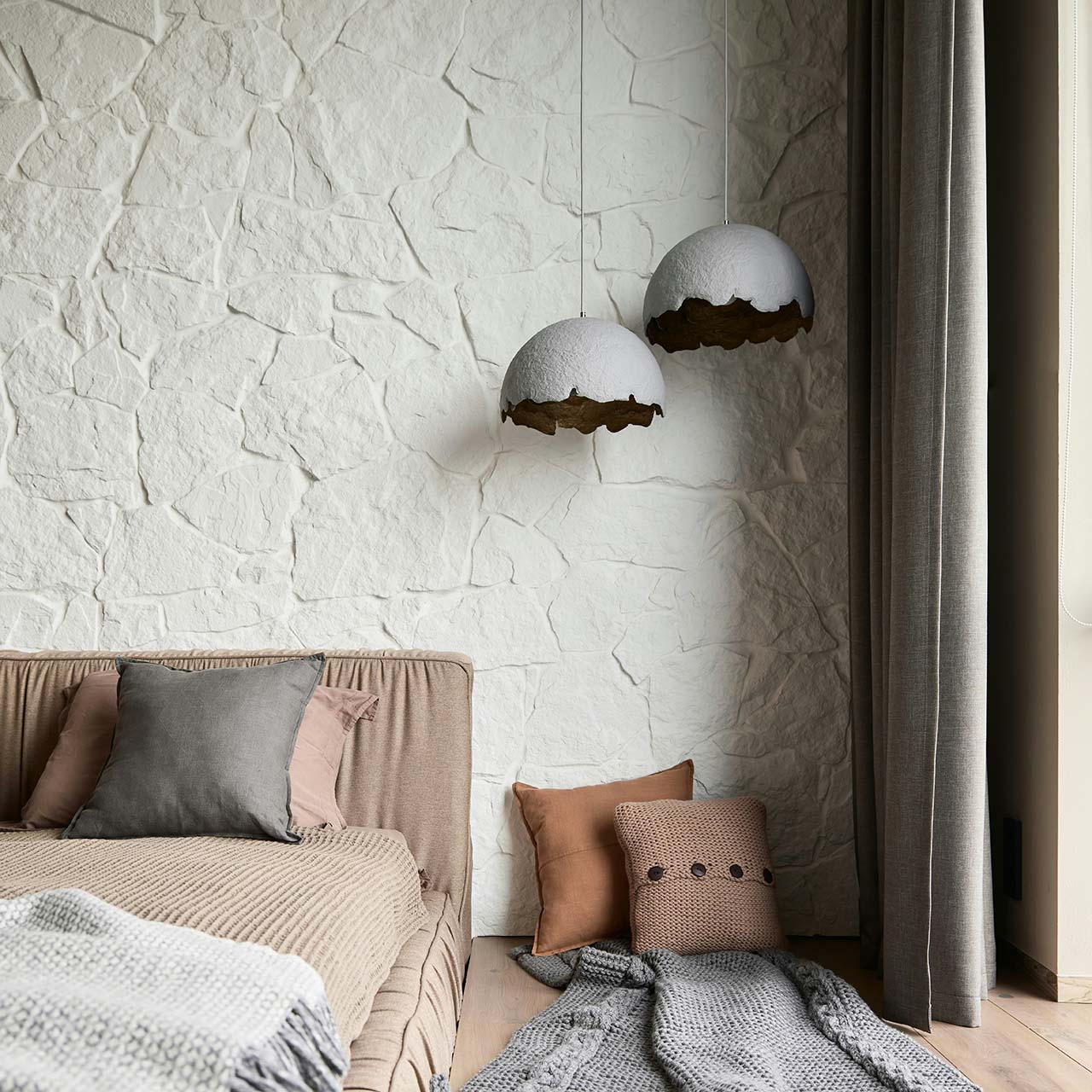
Create a tech-free zone
Your bedroom should be a sanctuary free from the buzz and glow of technology. Blue light from screens tricks your brain into thinking it’s daytime, completely disrupting your natural sleep cycle.
Set up a charging station outside your bedroom—perhaps in your hallway or bathroom. This simple change helps train your brain to associate your bedroom with rest, not stimulation. You’ll sleep better knowing your devices aren’t calling for attention from your bedside table.
Add storage to reduce visual clutter
Smart storage solutions can maintain a tidy space without sacrificing style. Under-bed storage boxes or an ottoman bed with hidden under bed storage work brilliantly for keeping extra bedding and seasonal clothes out of sight.
Choose bedside tables with drawers for your essentials, or install floating shelves to free up floor space. The goal is simple: everything should have a home, and your bedroom should feel calm and uncluttered when you’re ready to sleep.
Takeaway Tip: A tidy bedroom equals a tidy mind—and better sleep follows naturally.
Rest easy knowing you’ve made the right choices
Creating your perfect sleep sanctuary comes down to making thoughtful choices about your bedroom environment. Whether you want to make a show-stopping statement with bold colour choices or create a calming focal point with soft textures, the key is designing a space that works specifically for you.
Small changes really can make a big difference. Rather than attempting a complete bedroom makeover overnight, you might start with just one element—perhaps swapping out your bedding or adding some calming scents. From there, you can gradually build your sanctuary until your bedroom truly feels like the restful retreat you deserve.
What works best will vary from person to person. You might find that lavender scents help you drift off perfectly, whilst someone else swears by chamomile. The principles remain the same, but your perfect balance of comfort, temperature, and atmosphere will be uniquely yours.
Your bedroom should be designed with sleep as its primary purpose, not as an extension of your living room or office space. So why not start your Weekend Project today?
After all, you spend roughly a third of your life in bed—surely that space deserves some thoughtful attention. These bedroom design secrets will help you create a true haven for rest, and you’ll notice the difference in how you feel every morning.
Sweet dreams start with smart design choices. What will you change first?
This post was published in collaboration with a content partner. The article is meant to inspire you how to live a slow, simple, soulful and sustainable lifestyle and may contain (affiliate) links to articles, websites or products/services that may be of interest to you.
Would you like to receive inspiration from The Slow Living Guide regularly?
Sign up for the newsletter here.
